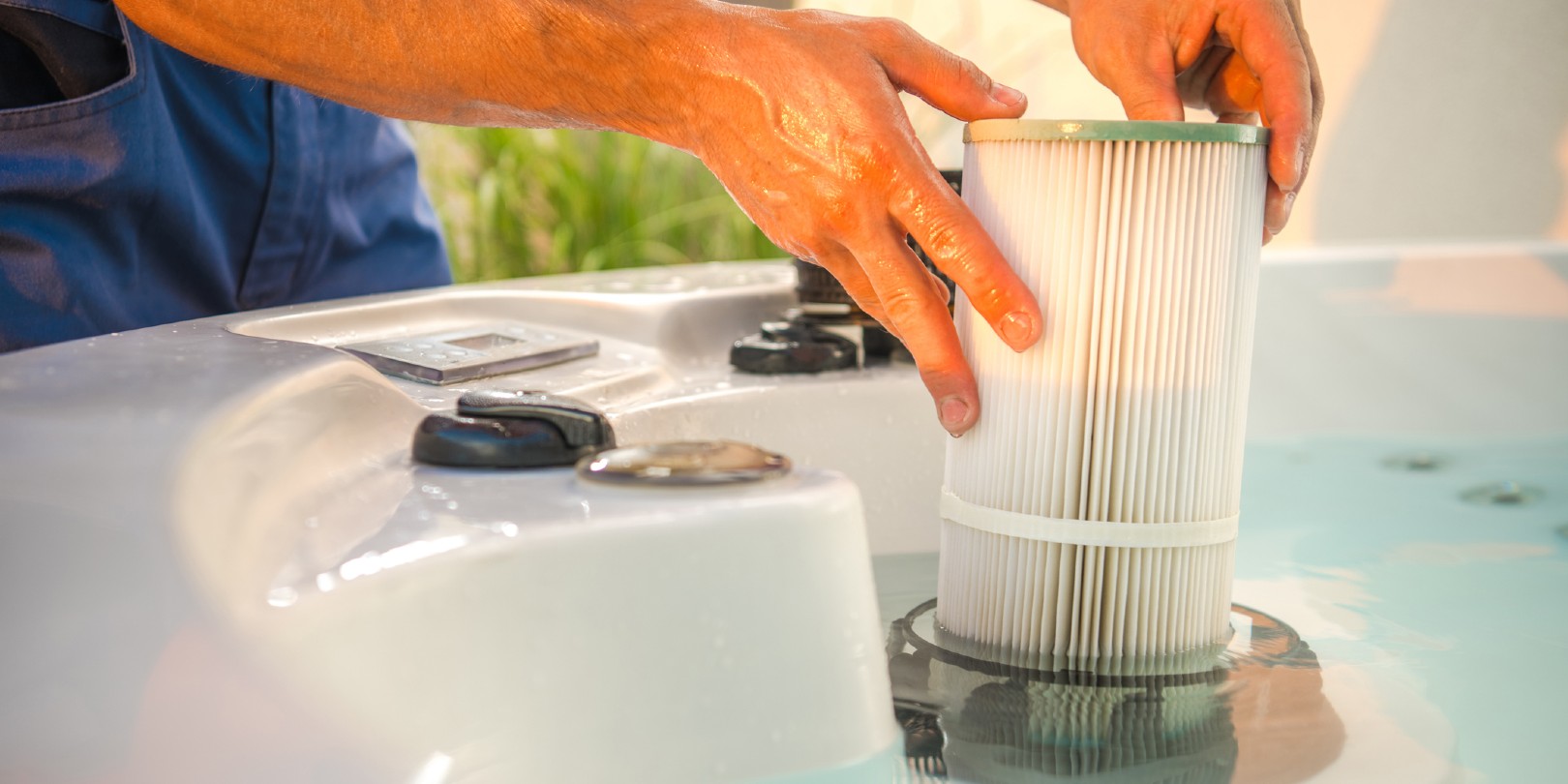How To Properly DIY Your Hot Tub Maintenance

A hot tub is an excellent way to enjoy a wonderful time while soaking and relaxing with your family or friends. You’ll have to do some work to keep your hot tub running, like regular maintenance. Hot tub maintenance can be daunting, but we have you covered.
In this post, we’ll touch on ensuring your hot tub runs smoothly by keeping up with your hot tub maintenance. We’ll go over everything you need to know, including steps on how to check the pH balance of your hot tub to keep it clean and disinfected. Grab your tools and prepare to DIY like a pro with our top tips.
Hot Tub Basics
There are two main types of hot tubs, including inflatable and permanent. Inflatable hot tubs are popular because they’re easy to set up, move around, and take down. Permanent hot tubs are more costly but offer more control over temperature and seating arrangements. When it comes to maintaining your hot tub, there are a few tools you’ll need, including a chlorine or bromine sanitizer, pH increaser and decreaser, testing strips, a skimming net, a brush, and a defoamer.
The Benefits of DIY Maintenance
One of the advantages of taking the DIY route regarding hot tub maintenance is saving time and money. When you take care of maintenance, you won’t need to pay for services such as filter changes or chemical top-ups. You also won’t need to wait for someone else to come out and care for your hot tub maintenance needs. Another benefit of DIY maintenance is that you can customize your experience however you’d like. From the chemicals used to maintain the water levels to the temperature settings, you can tailor it exactly how you want it.
Regular Hot Tub Maintenance
Follow proper maintenance procedures to maintain a clean and safe hot tub. Regularly testing the pH level is crucial, typically done every 7-10 days using testing strips or a digital pH reader. Aim for a pH range of 7.2-7.8.
In addition to pH testing, it’s necessary to monitor the chlorine or bromine levels weekly using testing strips or a test kit. Maintaining appropriate levels of these chemicals helps sanitize the water and prevent bacterial growth. An automatic dispenser can simplify this process by regulating the chlorine or bromine levels daily or weekly.
Checking the water level is another important aspect of hot tub maintenance, to be done weekly. If the water level is too low, it should be replenished using a garden hose or fill valve outside the hot tub area. Keeping the water above the jets is crucial to prevent air from entering the pump and causing damage.
Regular hot tub cleaning is essential to prevent the accumulation of bacteria and unpleasant odors. Use a skimming net daily to remove leaves and debris. Once a week, use a non-toxic cleaner with warm water for a thorough cleaning. Opt for chlorine-free products.
For the exterior surfaces of the hot tub, clean regularly with a cloth dipped in warm soapy water. Avoid using solvents or harsh cleaners on plastic composite surfaces to prevent fading or discoloration.
Troubleshooting Hot Tub Problems
Hot tubs can encounter issues affecting their performance and water quality. These issues include cloudy water, foaming, pH imbalance, equipment failure, leaks, algae growth, improper draining, and electrical problems.
Low shock levels and bacteria treatments often cause cloudy water in a hot tub. It’s critical to maintain proper shock levels and use defoamer products to combat foaming, which can result from soap residue in bath products.
pH imbalance is another issue that can arise in hot tubs, often caused by incorrect chlorine levels. Maintaining the appropriate chemical balance is crucial to prevent pH problems and ensure the water is safe. Regular maintenance and cleaning of filters can prevent equipment failure and prolong your hot tub’s lifespan.
Leaks are common in hot tubs, usually caused by faulty seals that impact gaskets. Repairing leaks is essential to prevent further damage and water loss. Algae growth can result from warm temperatures and poor chemical balance. Monitoring temperature and chemical levels and maintaining water chemistry are necessary to prevent algae growth.
Electrical problems can occur if the hot tub’s outlets are not wired correctly or overloaded with other devices. This issue can cause broken pumps or negatively affect heating elements. It’s crucial to address any electrical issues promptly and seek professional assistance.
When troubleshooting any issue with a hot tub, it’s critical to identify the specific cause before attempting any repairs. This step is crucial when dealing with electrical components, as safety is a top priority. Referring to the manufacturer’s manual or contacting customer service can provide valuable guidance. Always turn off all power sources before attempting repairs to ensure personal safety.
Conclusion
When performed correctly, taking care of your hot tub maintenance as a DIY project can be time-efficient and cost-saving. It can also be a rewarding experience. It’s critical to prioritize safety, especially when dealing with electricity-related tasks. Without proper knowledge and precautions, there is a risk of injury or death from electrical shock hazards. By following the right procedures and using appropriate materials, you can take pride in achieving a sparkling clean and fully functional home spa environment.
